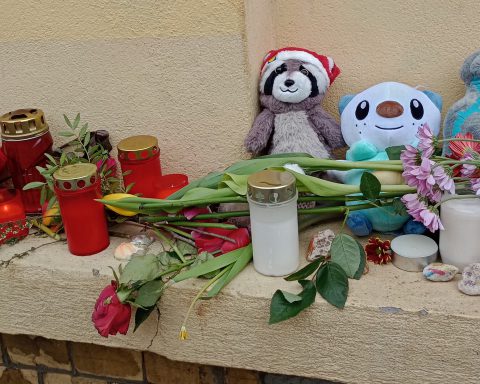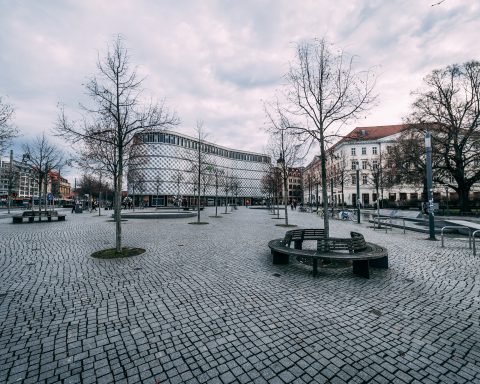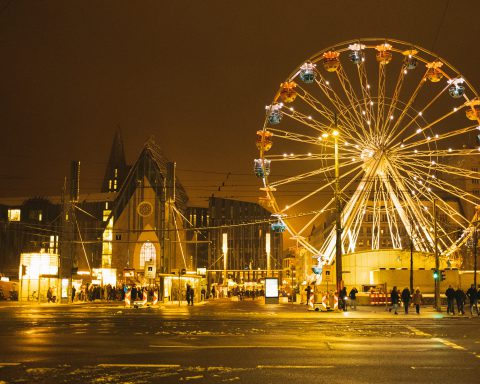There is a treasure buried beneath our city. Leipzig’s periphery is rich in one of the most easily accessible fossil fuels: lignite. In essence all you’ve got to do to get the stuff to the surface is to dig a huge hole in the ground. Lignite can subsequently be burned, providing a cheap albeit dirty source of electricity. After World War II this business became so profitable that 90 towns and villages in our rural neighbourhood were evacuated and destroyed to provide space for lignite mining. The southern periphery of Leipzig was turned into a moonscape.
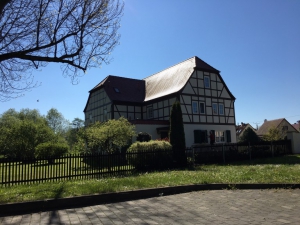
Since the 1950s it was planned that the tiny village of Dreiskau-Muckern too was to suffer this fate. As the government was exerting more and more pressure to evacuate, most villagers began to leave their homes voluntarily. From 1988 to 1993 Dreiskau-Muckern’s population had dropped from 400 to merely 50.
A village’s renaissance
The tide turned. The collapse of the lignite industry following German reunification was to change the village’s destiny. The evacuation was cancelled and Dreiskau was spared. Nevertheless, its iconic three-sided farmhouses had been left to rot and its infrastructure was nearing collapse.
But there was hope. Within the context of post-unification territorial reforms, Dreiskau-Muckern became a part of the municipal authority of Großpösna. An organisation was founded to oversee the village’s reconstruction, buying off most of its land from the MIBRAG mining company. Private individuals could apply to acquire properties in Dreiskau, provided they had a convincing plan for their renovation. By 1995, 95% of Dreiskau’s farmhouses were sold. The village participated in the Expo 2000 world’s fair in Hanover as a role model of sustainable rural development. More than 400 people, mostly young families, brought Dreiskau-Muckern back to life.
Meanwhile, Germany’s rural population is decreasing.
While Leipzig may be growing, rural areas in eastern Germany have been severely affected by population decline. There are two reasons for this.
Firstly, we aren’t having enough kids. Saxony has the highest birth rate of all German states (1.6 children per woman), but it is still well below replacement level (2.1 children per woman). This aggravates the second main reason for population decline. The few children that are born in rural areas tend to move to larger cities – this is also the main reason for Leipzig’s population boom.
In Germany you’ll roughly find a village every 3km, a town every 15km and a major city every 60km. This dense network of settlements is obsolescent. Germany possesses a working population of 43 million; only one million people work in the agricultural sector. There are simply no employment opportunities in rural areas.
Dreiskau-Muckern is the exception to the rule. Birth rates are exceptionally high and the village’s residents have founded lots of small-sized enterprises. Tourism is booming. The Highfield Festival attracts thousands of music-lovers to Dreiskau every summer. There is an agricultural camp for school trips and a luxury holiday resort at the lakefront of nearby Störmthaler See. A medium-sized campsite is currently being developed. Dreiskau’s pub provides excellent cakes and cheap drinks. Every year the villagers organise an open day allowing tourists to visit the traditional farmhouses. Local artists regularly present their work to the public.
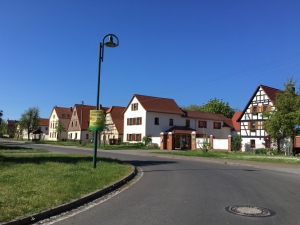
Visit Dreiskau-Muckern
Since 1994 Dreiskau-Muckern has been experiencing a spectacular revival. It is truly one of the highlights of Leipzig’s rural periphery and well worth a visit. If Saxony’s rural infrastructure and tradition is to be maintained, Dreiskau-Muckern is the way to go. Without a car you can get there using bus line 141, which leaves from Probstheida (trams 2 and 15). Make sure you plan your trip in advance, as departures are somewhat irregular.











